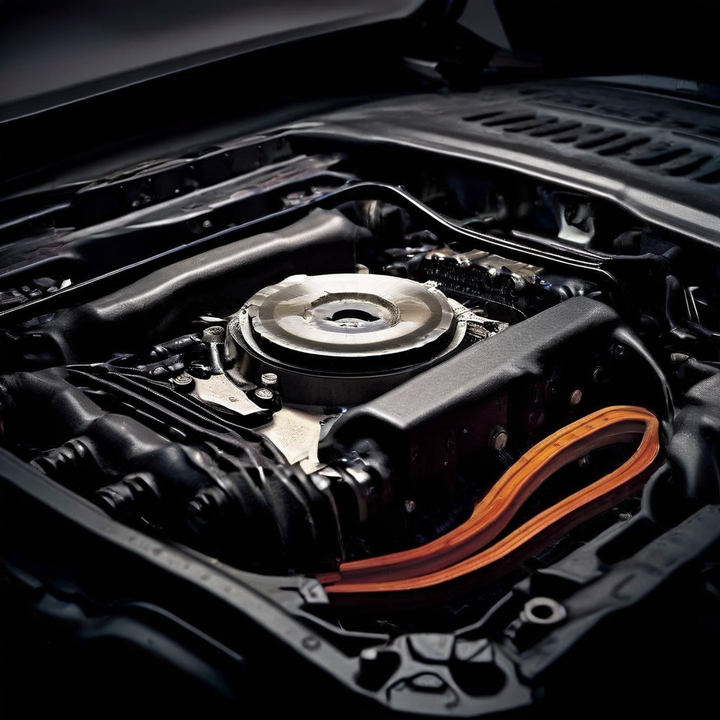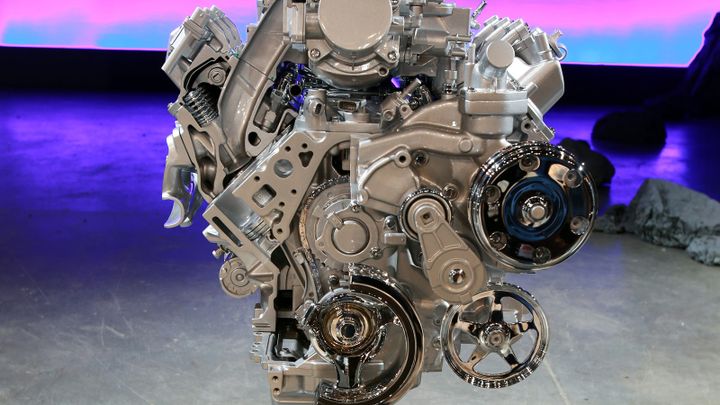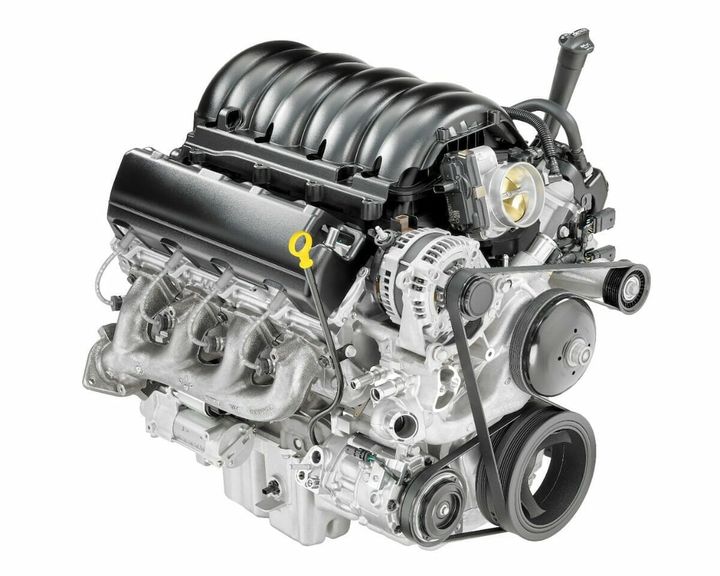


The 5.3L EcoTec3 V8 engine, introduced by General Motors in 2014, has gained a reputation for its power and efficiency. However, like any complex machine, it is not without its share of problems and issues. In this comprehensive guide, we will delve into the common problems associated with this engine, their causes, symptoms, preventive measures, and more. From carbon buildup to fuel injector failures and Active Fuel Management (AFM) system issues, we'll explore each concern in detail, equipping you with the knowledge to make informed decisions and ensure reliable performance.

The 5.3L EcoTec3 V8 engine employs a direct injection system, which sprays fuel directly into the combustion chambers. While this technology offers improved efficiency, it also presents a unique challenge: carbon buildup in the intake ports and cylinders.
Carbon buildup in the 5.3L EcoTec3 engine can manifest in various ways, including rough idling, stuttering at idle, decreased power output, shaky acceleration, engine misfires, and slightly lean air-fuel ratios. If left unchecked, these symptoms can escalate, potentially leading to more severe engine damage.
| Symptom | Consequence |
|---|---|
| Rough idling | Decreased drivability |
| Stuttering at idle | Potential stalling |
| Decreased power output | Reduced acceleration and towing capability |
| Shaky acceleration | Drivability issues |
| Engine misfires | Potential engine damage |
| Lean air-fuel ratios | Increased emissions and potential catalytic converter damage |
To mitigate carbon buildup, it is recommended to use premium fuel, which can help reduce the formation of deposits. Additionally, consider having the intake ports cleaned using the walnut blasting method, especially on higher mileage engines. Regular maintenance and adherence to recommended service intervals are also crucial in minimizing the impact of carbon buildup.
The direct injectors in the 5.3L EcoTec3 V8 engine are subjected to extreme temperatures and pressures during the combustion process, making them susceptible to failure over time.
When a fuel injector fails, it can result in misfires, rough idling, and decreased power output in the affected cylinder. These symptoms not only impact the engine's performance but can also lead to further damage if left unaddressed.
To minimize the risk of fuel injector failure, it is crucial to follow the recommended maintenance intervals and use high-quality fuel. Regular inspections and timely replacement of faulty injectors can prevent more extensive damage and ensure optimal engine performance.
The 5.3L EcoTec3 V8 engine features GM's Active Fuel Management (AFM) system, also known as cylinder deactivation. While designed to improve fuel efficiency, this system has been known to cause several issues.
Common issues associated with the AFM system include:
Lifter failure
Excessive oil consumption (as oil can pass through the intake and be burned)
Annoying droning sounds when the engine is running in V4 mode, especially with aftermarket exhaust systems
The AFM system utilizes engine oil to control the lifters, which can lead to potential problems over time. As the lifters become stuck, they can damage the camshaft, resulting in expensive repairs.
To mitigate AFM system issues, it is essential to monitor oil levels frequently and consider using the recommended oil grade and change intervals. In some cases, owners may opt for an AFM delete, which disables the cylinder deactivation feature to address excessive oil consumption concerns.
Certain generations of the 5.3L EcoTec3 engine have experienced specific issues:
| Generation | Issues |
|---|---|
| First-Generation (1999-2007) | - Head cracking - Intake manifold gasket failure |
| Second-Generation (2007-2013) | - Excessive oil consumption due to AFM system and piston ring design - Premature spark plug fouling caused by oil consumption - Class-action lawsuit against GM for model years 2010-2014 |
The first-generation engines were prone to head cracking and intake manifold gasket failure, which could lead to coolant leaks and rough running. The second-generation engines faced excessive oil consumption due to issues with the AFM system and piston ring design, leading to a class-action lawsuit against GM for certain model years. Additionally, premature spark plug fouling caused by oil consumption was a common issue.
Be vigilant for the following symptoms, which may indicate issues with the 5.3L EcoTec3 V8 engine:
Rough idling
Stuttering at idle
Decreased power
Shaky acceleration
Engine misfires
Excessive oil consumption
Droning sounds
Addressing these symptoms promptly can prevent further damage.
To diagnose the root cause of the problems, mechanics may perform various tests, such as:
Compression tests
Leak-down tests
Visual inspections of engine components
Proper diagnosis is crucial for effective repairs and long-term reliability.
Proper maintenance is key to extending the lifespan and reliability of the 5.3L EcoTec3 engine. Follow these practices:
Use premium fuel to reduce carbon buildup
Use the recommended oil grade and change it regularly
Monitor oil levels frequently
Consider intake port cleaning on higher mileage engines
While the 5.3L EcoTec3 engine has its share of common problems, it is generally considered a robust and reliable engine when properly maintained. With regular maintenance and adherence to recommended practices, this engine can last over 250,000 miles.

However, it is worth noting that a class-action lawsuit was filed against GM in 2021 regarding issues with the valvetrain and Active Fuel Management system in the 5.3L EcoTec3 engine, covering vehicles from certain model years. Owners of affected vehicles may be eligible for compensation or repairs under this lawsuit.
The 5.3L EcoTec3 V8 engine is a powerful and efficient powerplant, but like any complex machine, it is not without its flaws. By understanding the common problems, generation-specific issues, symptoms, and maintenance requirements, owners and prospective buyers can make informed decisions and take proactive measures to ensure reliable and long-lasting performance. Regular maintenance, adherence to recommended practices, and prompt attention to any emerging issues are crucial for maximizing the engine's potential and minimizing costly repairs.
The direct injection system that sprays fuel directly into the combustion chambers can lead to carbon buildup in the intake ports and cylinders over time.
Follow the recommended maintenance intervals and use high-quality fuel. Regular inspections and timely replacement of faulty injectors is also advised.
The AFM system, also known as cylinder deactivation, is designed to improve fuel efficiency by deactivating some cylinders under light load conditions.
Common issues include lifter failure, excessive oil consumption, and annoying droning sounds when the engine is running in V4 mode.
The first-generation engines (1999-2007) were prone to head cracking and intake manifold gasket failure.
The second-generation engines (2007-2013) faced excessive oil consumption due to issues with the AFM system and piston ring design.
Be vigilant for symptoms like rough idling, stuttering at idle, decreased power, shaky acceleration, engine misfires, excessive oil consumption, and droning sounds.
Mechanics may perform compression tests, leak-down tests, and visual inspections of engine components to diagnose the root cause of problems.
Use premium fuel, use the recommended oil grade and change it regularly, monitor oil levels frequently, and consider intake port cleaning on higher mileage engines.
Yes, a class-action lawsuit was filed against GM in 2021 regarding issues with the valvetrain and Active Fuel Management system in certain model years.

Sarah isn't your average gearhead. With a double major in Mechanical Engineering and Automotive Technology, she dived straight into the world of car repair. After 15 years of turning wrenches at dealerships and independent shops, Sarah joined MICDOT to share her expertise and passion for making cars run like new. Her in-depth knowledge and knack for explaining complex issues in simple terms make her a valuable asset to our team.



